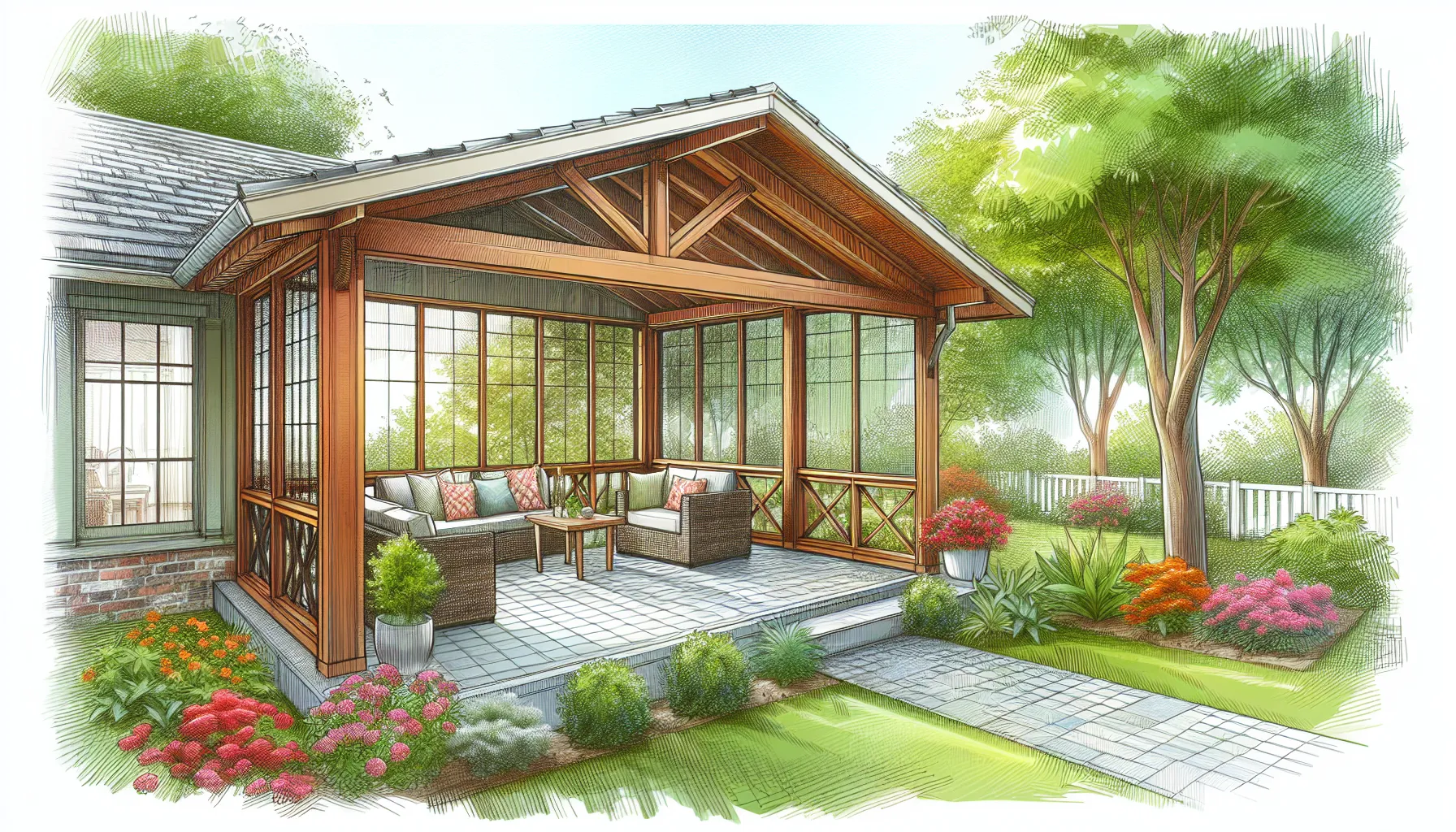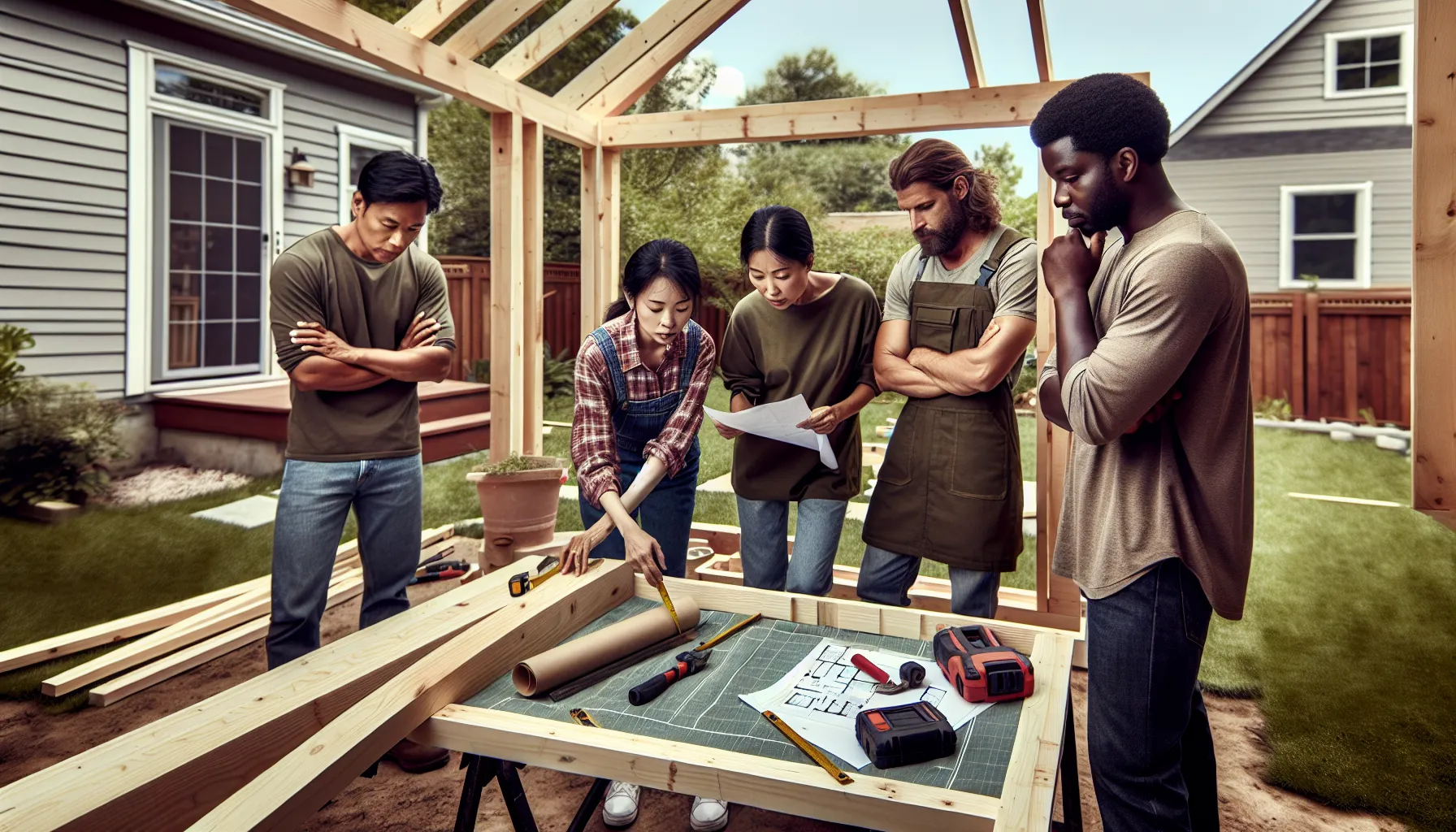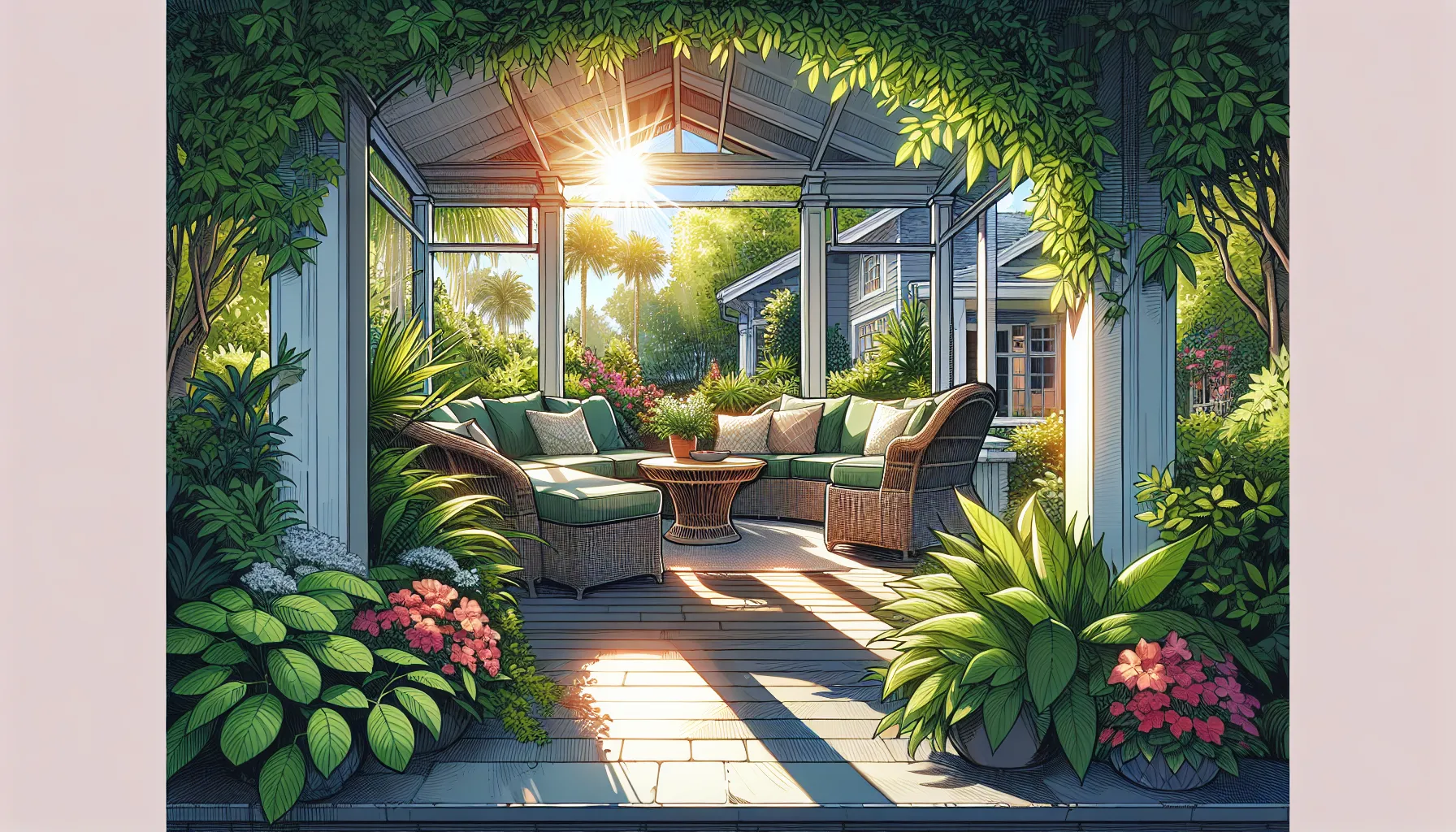Key Takeaways
- Cost Overview: In 2025, adding a screened-in porch typically ranges from $5,000 to $20,000, influenced by factors like size, materials, and labor costs.
- Material Choices Matter: Selecting the right materials—pressure-treated wood, aluminum, or fiberglass—affects both aesthetics and expenses, with wood often being more maintenance-intensive.
- Location Impacts Pricing: Labor costs and project expenses vary significantly by location, with urban areas generally seeing higher rates compared to rural regions.
- Permits Are Essential: Be aware of local regulations and permit requirements, as these can incur additional costs and need to be secured before starting construction.
- Value Addition: Adding a screened-in porch can boost your property value, with potential returns on investment ranging up to 80% as noted by the National Association of Realtors.
- Enhanced Living Experience: A screened-in porch provides a multifunctional space for relaxation and entertainment while keeping out bugs and inclement weather, enriching your outdoor living experience.
Thinking about enhancing your home with a screened-in porch? We’re all looking for ways to elevate our living spaces while enjoying the outdoors, and a screened-in porch offers the perfect blend of comfort and nature. As we step into 2025, understanding the costs associated with this popular home addition is crucial for making informed decisions.
In this article, we’ll explore the factors influencing the cost of adding a screened-in porch, from materials to labor. Whether you’re dreaming of a cozy retreat or a lively entertaining space, we’ll provide insights to help you budget effectively. Let’s dive into the numbers and discover how to turn your vision into reality without breaking the bank.
Overview of Screened-In Porches
A screened-in porch serves as a valuable extension of home living space, offering a blend of outdoor enjoyment and indoor comfort. Homeowners appreciate this feature for its versatility; it can function as a cozy sanctuary, a vibrant entertaining area, or an all-season retreat without the hassle of bugs and unpredictable weather.
When considering adding a screened-in porch, evaluating design and material choices is crucial. Common materials include pressure-treated wood, aluminum, and fiberglass. Each material presents unique benefits and cost implications. For instance, wooden structures may provide aesthetic appeal but require more maintenance over time, while aluminum options can be more durable and lower-maintenance.
Budgeting for a screened-in porch involves understanding both upfront costs and long-term investments. Typical costs in 2025 range from $5,000 to $20,000, depending on factors such as size, location, and finishes. For example, a small, basic screened-in porch may cost around $5,000, while a larger, custom-designed version can exceed $20,000. Factor in the expense of labor, which can account for 30-50% of the overall project cost.
Understanding local regulations also plays a vital role in the planning process. We often need to obtain permits based on local zoning laws before construction begins. Catching these requirements early on helps prevent delays and unexpected expenses, ensuring a smoother experience as we turn our vision into reality.
Investing in a screened-in porch not only enhances living space but also boosts property value. According to the National Association of Realtors, adding a porch can yield a return on investment of up to 80%. As we contemplate this addition, we balance our immediate lifestyle preferences with long-term property benefits, creating a lasting space for relaxation and gatherings.
Factors Influencing Cost

Understanding the factors influencing the cost of adding a screened-in porch enables better budgeting and decision-making. Key considerations include materials, construction, location, and labor costs.
Materials and Construction
Materials play a crucial role in determining the overall cost of a screened-in porch. Common options include pressure-treated wood, aluminum, and fiberglass, each with distinct benefits and pricing. For instance, pressure-treated wood typically ranges from $10 to $30 per square foot, while aluminum may cost between $20 and $50 per square foot. Additionally, the type of roofing, flooring, and screening selected can significantly alter expenses. A basic roof may add $4 to $8 per square foot, whereas custom features, like skylights or decorative railings, can raise costs by several thousand dollars. The construction method chosen—whether DIY or professional installation—further impacts the total investment, affecting both material selection and labor needs.
Location and Labor Costs
Location strongly influences labor costs and overall project prices. Urban areas tend to exhibit higher labor rates due to demand and living costs, whereas rural locations may yield more affordable options. Typically, labor can account for 30-50% of the project’s total cost. Local building codes and permit requirements also affect expenses; some regions mandate specific techniques or materials that may incur additional charges. For example, a permit for a screened-in porch could range from $200 to $800, depending on local regulations. Weighing these factors while considering your specific location provides a clearer picture of the anticipated investment for a screened-in porch.
Average Costs in 2025

Understanding the average costs associated with adding a screened-in porch in 2025 aids in effective budget planning. Costs typically vary based on several factors such as location, materials, and size. Here’s a detailed breakdown.
National and Regional Variations
Cost variations occur between regions across the United States. Urban areas often feature higher labor costs due to demand and living expenses. For example, cities like San Francisco may witness projects nearing $25,000, while more rural locations could average around $5,000. Availability of skilled labor also influences pricing; some regions may experience shortages, increasing costs further. Additionally, materials’ access and local economic conditions contribute to these disparities, meaning our budget consideration must align with regional market trends.
Cost Breakdown by Size
Size plays a crucial role in determining the final price of a screened-in porch. Porches under 100 square feet typically range from $5,000 to $10,000, whereas larger options, such as those exceeding 300 square feet, might reach $20,000 or more. Each additional square foot increases material and labor costs, which can climb between $30 to $100 per square foot, depending on the complexities involved. Custom features, such as built-in seating or lighting, add to this base cost. Thus, when planning for size, we must carefully weigh desired dimensions against our budget constraints.
Benefits of Adding a Screened-In Porch
Adding a screened-in porch offers numerous advantages that enhance our living experiences. First, it effectively extends our living space, providing a multifunctional area for relaxation, dining, or entertaining guests while enjoying fresh air. The addition creates an inviting atmosphere that blends outdoor enjoyment with indoor comfort.
Second, screened-in porches protect us from insects and weather elements, allowing us to enjoy our outdoor environment year-round. This protection encourages us to spend more time outside, whether it’s sipping coffee in the morning or hosting evening gatherings.
Third, this addition can increase the overall value of our property. According to the National Association of Realtors, we can see potential returns on investment up to 80%. Such value enhancement makes a screened-in porch an appealing upgrade for homeowners considering future resale.
Fourth, maintaining a screened-in porch requires minimal effort. We can easily clean screens and surfaces, ensuring the space remains enjoyable and visually appealing. This low-maintenance characteristic appeals to many homeowners seeking functional yet hassle-free spaces.
Lastly, a screened-in porch promotes outdoor living benefits, such as improved mental health and well-being. By providing us with a space to connect with nature, enjoy sunlight, and breathe fresh air, this addition enriches our daily lives. Consider how these benefits align with our lifestyle and hosting needs when planning our home upgrade.
Conclusion
Adding a screened-in porch is a worthwhile investment that can transform our homes and enhance our outdoor living experience. As we look ahead to 2025 it’s crucial to keep in mind the various factors influencing costs. From materials to labor and location we have the opportunity to create a space that reflects our style and meets our needs.
Understanding the financial aspects and potential returns on investment can empower us to make informed decisions. With careful planning and budgeting we can enjoy the benefits of a screened-in porch while adding value to our property. Embracing this addition not only elevates our living space but also enriches our quality of life. Let’s take the next step toward creating our ideal outdoor retreat.
Frequently Asked Questions
What is a screened-in porch?
A screened-in porch is an outdoor structure that features screens instead of traditional walls and windows. It offers protection against insects and weather while allowing fresh air and outdoor views, making it a versatile space for relaxation and entertaining.
What are the benefits of adding a screened-in porch?
Adding a screened-in porch enhances your living space, allowing you to enjoy the outdoors comfortably. It provides protection from insects, increases property value, requires low maintenance, and offers mental health benefits by promoting outdoor living.
How much does a screened-in porch cost in 2025?
In 2025, the cost of a screened-in porch typically ranges from $5,000 to $20,000, depending on factors like size, materials, location, and custom features. Urban areas may see higher costs due to labor rates.
What factors influence the cost of a screened-in porch?
Key factors influencing the cost include materials (like pressure-treated wood or aluminum), construction methods, project size, location, and local labor rates. Custom features and local building codes also play a significant role in overall expenses.
How do local regulations affect building a screened-in porch?
Local regulations may require permits and compliance with building codes, which can add to overall costs and project timelines. It’s essential to research and obtain necessary approvals to avoid delays and unexpected expenses.
What materials are commonly used for screened-in porches?
Common materials for screened-in porches include pressure-treated wood, aluminum, and fiberglass. Each material has its unique benefits and cost implications, impacting the overall expense and durability of the structure.
How can I budget for a screened-in porch?
To budget effectively, consider the size, materials, labor costs, and any custom features. Research local pricing, obtain quotes from contractors, and account for potential permit fees to create a realistic financial plan for your project.
Will adding a screened-in porch increase my home’s value?
Yes, adding a screened-in porch can increase your property’s value, with potential returns on investment of up to 80%. This addition not only enhances living space but also attracts potential buyers looking for outdoor enjoyment.






